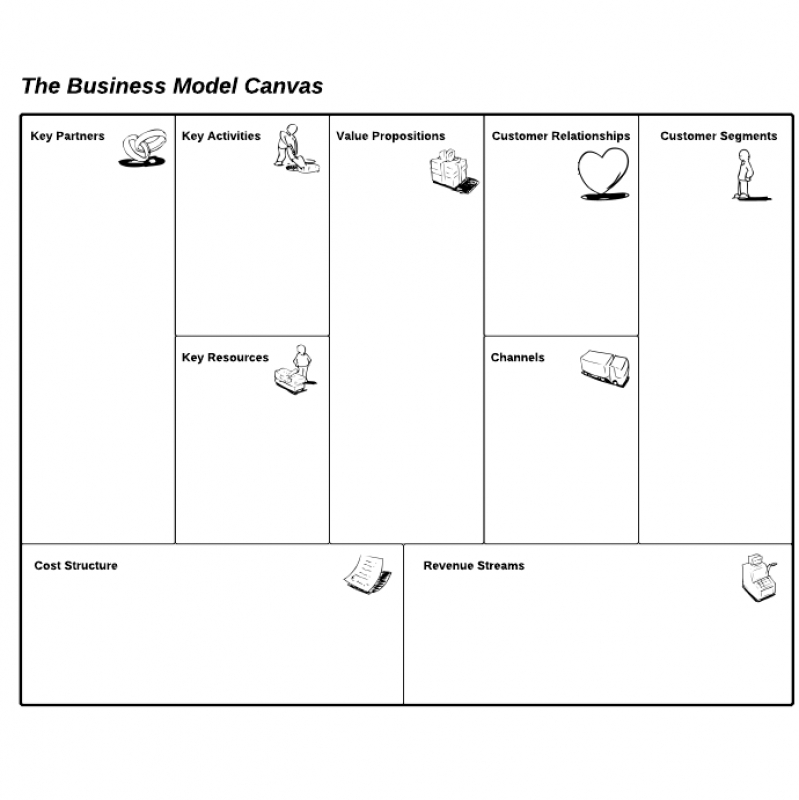Billed as a book for “visionaries, game changers and challengers”, this introduces a useful new modelling concept: the Business Model Canvas. It is billed as a shared language for describing and visualising business models. A more down-to-earth description would be that it’s a template for describing an organisation’s key drivers, both in its current and potential future states.

Business Model Canvas (source: Ostervalder and Pigneur)
The Canvas consists of nine building blocks, or sections, namely:
- Customer Segments (CS) – the customer groups that the organisation serves
- Value Propositions (VP) – how the organisation seeks to solve customers’ problems or meet customers’ needs
- Channels (CH) – the mechanism by which value propositions are delivered
- Customer Relationships – the organisation’s maintenance of the customer segments
- Revenue Streams (RS) – resulting from value propositions being delivered to customer segments
- Key Resources (KR) – the assets required to offer and deliver the building blocks above
- Key Activities (KA) – the activities necessary for the organisation to deliver the building blocks above
- Key Partnerships (KP) – highlights the external organisations that supply key activities and key resources
- Cost Structure (SC) – describes the most important costs to operate the business model.
Of particular interest to me is the use of the Business Canvas as a what-if approach for customer-focused story-telling. This useful method can be considered the strategic counterpart to the use of personae and scenarios in agile approaches.
The key advantage to this approach is that the key elements of the organisation’s business are displayed on one page. Printed as a poster-size template, there is plenty of whitespace to write, doodle or use sticky notes. A potential disadvantage is that the very simplicity of the approach may lead to oversights in certain areas, for example governance constraintssuch as corporate, legal or financial.
The technique (and book) is recommended for those practitioners and their clients that are visually biased who need an rapid approach for innovating strategic models.